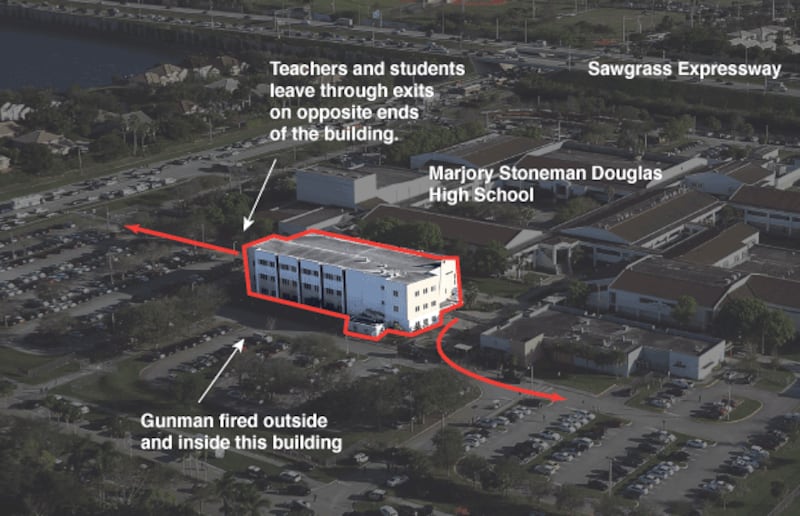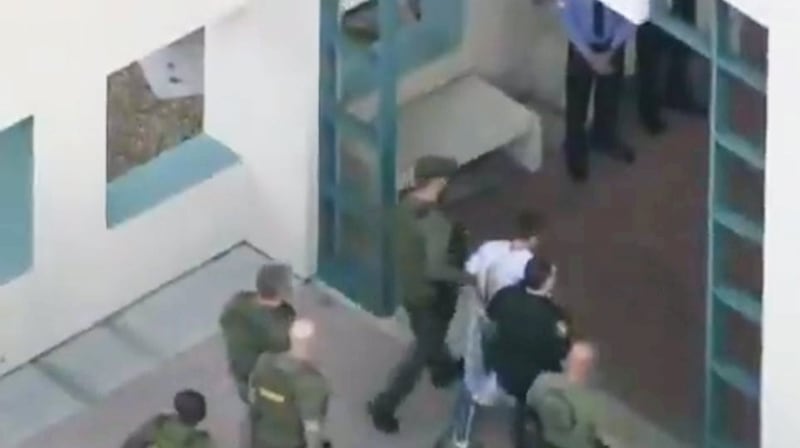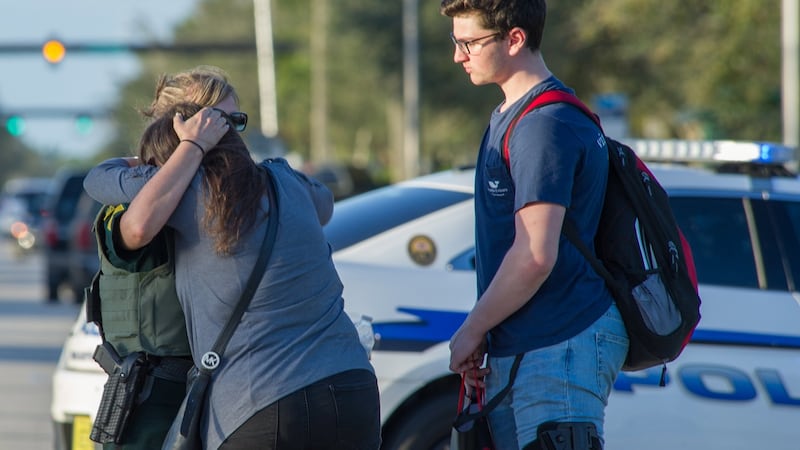At 2.40pm on Wednesday a 19-year-old man wearing a gas mask walked into his former high school armed with smoke grenades and an AR-15 style rifle.
After triggering the fire alarm, in order to entice students into the corridors, according to police, he began shooting. The latest mass shooting in American history had begun.
On Valentine's Day 2018, Parkland, a suburban middle-class community about 60km north of Miami, joined Sandy Hook and Columbine schools in the pantheon of names associated with America's gun culture.
At least 17 people – including teachers and students – were killed, while at least three more were critically injured.

The Florida school tragedy is the biggest mass shooting to occur in America since last November's mass murder in Southern Springs, Texas, when a local 26-year-old killed 26 of his neighbours during a Sunday morning church service.
A month earlier, a gunman opened fire from a Las Vegas hotel room, killing 58 people and injuring hundreds more, many of whom have been left with life-changing injuries.
Wednesday's Florida school shooting is the deadliest school or university shooting since the Sandy Hook massacre of 2012, when 20-year-old Adam Lanza killed 20 children and six adults before killing himself.
But gun violence in US schools is not an anomaly.
Other shootings
Since the beginning of this year, there have been seven other shooting incidents in schools which have caused injuries or death, according to the advocacy group Everytown for Gun Safety.
Just three weeks ago a 15-year-old male student at Marshall County High School in Kentucky opened fire, shooting 16 people and killing two of his fellow students.
Like the Florida attacker, he did not die during the attack. He was charged with two counts of murder and 12 counts of first degree assault and is waiting to hear if he will be charged as an adult rather than a juvenile.
Like many schools in the United States, the Marjory Stoneman Douglas High School in Parkland had a full-time security presence, a measure of the very real threat posed by gun crime to American students and teachers.
Approximately two-thirds of schools in the United States now conduct active-shooter exercises, during which teachers and students are trained on what to do if an armed intruder enters the building.
Parkland was no different, and had held regular lockdown and active shooter drills in order to prepare for an eventuality that tragically unfolded on Wednesday.
But the gunman’s decision to trigger the fire alarm may have served to confuse staff and students who thought it was a fire drill, not an active shooter situation.
Most teachers led their students into the corridor, only to rush back into the classrooms when they heard gunshots.

Elementary school
Last November, an elementary school in northern California escaped a gun tragedy after the school secretary put the school in lockdown and barricaded the building after hearing gunshots.
The gunman shot at the building for six minutes before finally leaving. He had previously killed his wife and went on a shooting rampage, killing several more people.
The school’s preparations and security measures largely prevented a potentially large-scale tragedy.
It is not yet clear how the Florida gunman entered the building on Wednesday, a building that was supposed to have limited points of entry.
A disturbing picture has also emerged of the suspect - Nikolas Cruz (19) - and particularly the propensity towards violence and gun crime in his social media postings. He was also expelled from the school last year.
But while American schools are beginning to live with the reality of gun violence, politically little progress has been made to tighten gun laws.
The National Rifle Association, the nation's most powerful gun ownership lobby group, holds a tight grip on Republican politics.
Practically all the big Republican names in Congress, including House speaker Paul Ryan, and senators John McCain and Marco Rubio, receive political donations from the NRA.
Despite promises to tighten controls on “bump stocks”, a device used by the Las Vegas shooter to mimic the action of an automatic rifle, there has been no legislation yet from Congress.
The only gun-related legislation passed since then has been a law giving gun owners who hold a so-called concealed carry licence permission to conceal a handgun in other states – a big win for the NRA.
The legislation did also include a proposal to improve the national background check system in the wake of the Texas massacre, after it emerged that the suspect’s past convictions on domestic abuse had not shown up in the background checks, allowing him to purchase the gun he used.

Gun laws
Not all members of Congress are opposed to tightening gun laws, however.
As news of the Florida shooting emerged Wednesday, Connecticut senator Chris Murphy interrupted the immigration debate on the Senate floor and told senators to turn on their televisions. "Let me just note once again for my colleagues: this happens nowhere else other than the United States of America. This epidemic of mass slaughter. This scourge of school shooting after school shooting.
“It only happens here, not because of coincidence, not because of bad luck, but as a consequence of our inaction. We are responsible for a level of mass atrocity that happens in this country with zero parallel anywhere else.”
Former congresswoman Gabrielle Giffords, who survived a gunshot to the head in 2011, also called for American politicians to do the right thing, noting that 315 Americans are shot every day.
“Americans must find the courage to imagine a country where these massacres do not occur. Our leaders must find the courage to escape the confines of their politics and pursue the moral necessity of peace and safety.”
As the stories of the victims of Wednesday’s carnage emerge, there is likely to be intense debate about gun control in the coming days. Whether that translates into political change as the memory of February 14th fades is another matter.











